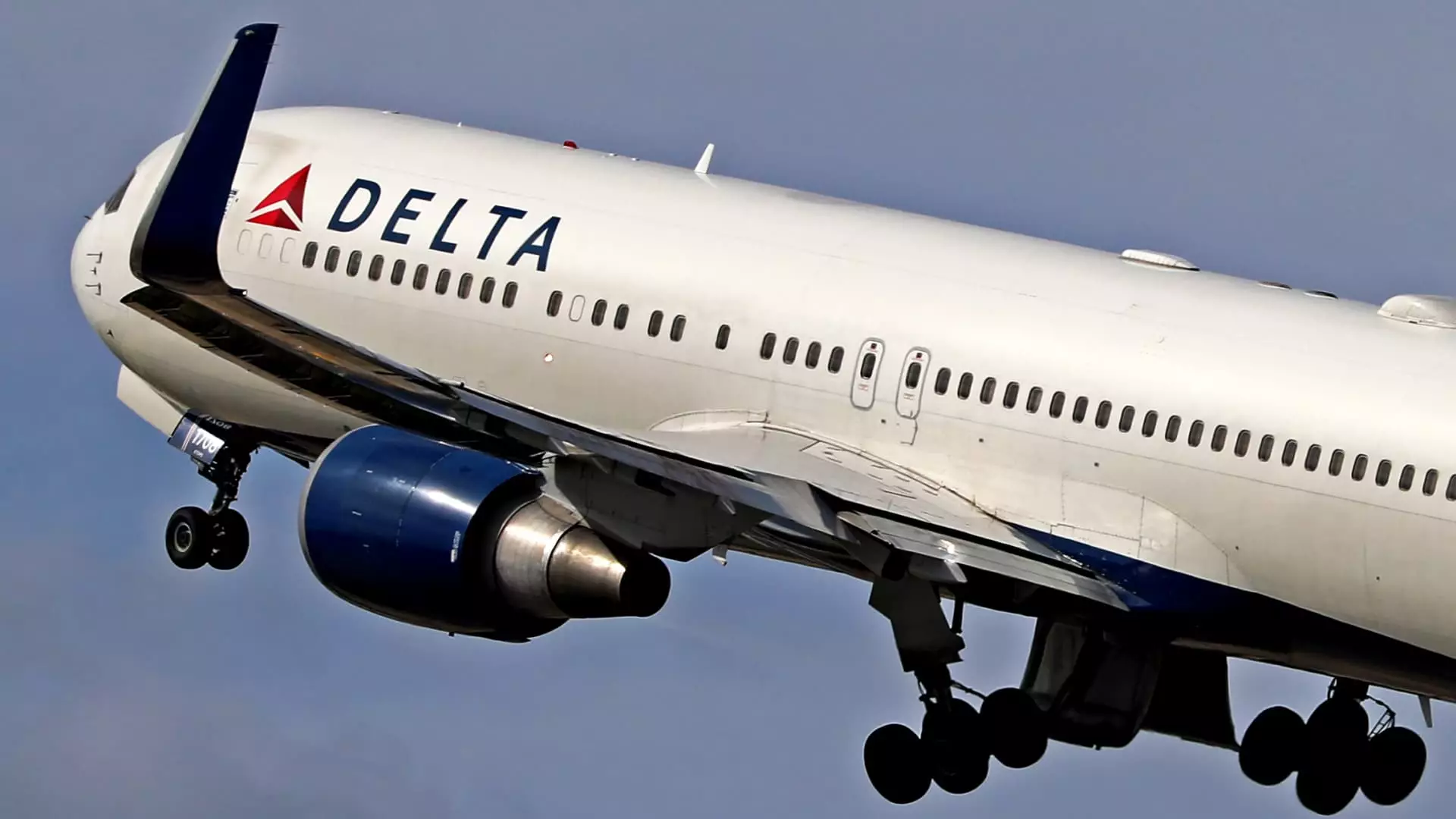The recent plunge in airline stocks serves as a stark reflection of the ongoing turbulence within the travel sector. Wall Street’s growing frustration regarding dwindling travel demand, partly fueled by apprehensions about new tariffs and a significant drop in consumer confidence, has caused significant losses for major carriers. The situation has reached a point where even Delta Air Lines, historically a bastion of profitability, has witnessed its stock drop over 2% following Jefferies’ downgrade from a “buy” to a “hold” rating. Furthermore, the drastic reduction of its price target from $86 to $46 indicates a prevailing belief that the airline won’t just struggle in the present but could also foresee a challenging future.
While Delta has touted increased revenues from its premium offerings—higher-value first class seating and a fruitful partnership with American Express—the broader context suggests these strategies may not be sufficient to counteract the impending slowdown. Executives are allegedly preparing for the harsh reality of revising forecasts downward for 2025, a concerning presumption that signals institutional doubt in sustainability amid troubling economic indicators.
The Ripple Effect Across the Industry
The malaise doesn’t stop at Delta. American Airlines, Southwest, and Air Canada have also felt the heat, each suffering from sharp declines in their stock prices. Jefferies’ downward adjustments across the board underscore this pervasive threat: the airline industry is teetering at the edge of a financial precipice. Only United Airlines retains the support of Jefferies, but even that designation comes at the cost of a hefty price target cut.
Central to the airline industry’s woes is the unpredictable nature of consumer behavior. The latest analytics from Bank of America indicate a worrying trend, with credit and debit card spending on airlines declining by 7.2%. With overall spending on essentials rising only 1.5%, a significant segment of travelers seems to be scaling back or reconsidering their travel plans. The implications are severe: the U.S. travel industry, reliant on a delicate balance of domestic tourism, finds itself vulnerable to external economic pressures.
Consumer Confidence and the Future of Travel
Historically low consumer confidence is not merely a blip but rather an indicator painting a grim picture. As families and individuals adjust their personal finances and reassess discretionary expenditures, travel has become one of the first areas to undergo severe scrutiny. This changing landscape poses questions that airline giants must grapple with urgently. Can they adapt and innovate sufficiently to attract travelers back to the skies?
It’s also critical to note external influences, such as adverse weather conditions and the timing of holidays like Easter, which undeniably play a role in travel planning, but these factors do not wholly explain the negative sentiment. The question remains: Is the consumer sentiment shift permanent, or will confidence eventually rebound, allowing airlines to recover?
As the industry braces itself for Delta’s impending earnings report—a key bellwether in this turbulent earnings season—stakeholders must remain vigilant. The reality is that the health of this sector reflects much more than corporate earnings; it encapsulates a broader economic narrative of consumer sentiment, travel habits, and global interconnectedness. The unfolding drama serves as both a warning and a lesson in adaptability.

